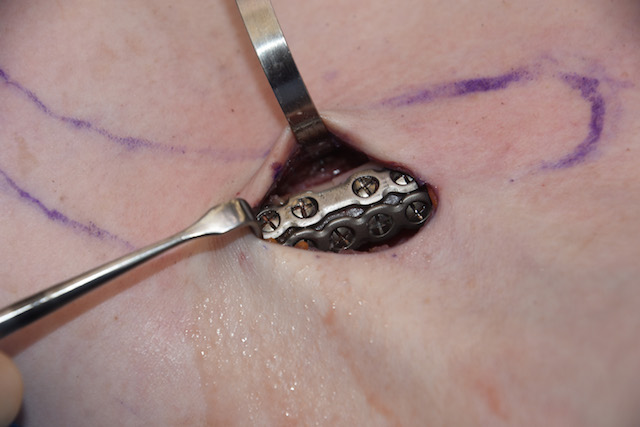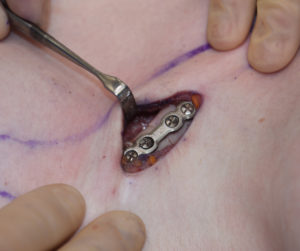Unlike shoulder augmentation there is only one method to achieve shoulder width reduction. Shortening the length of the horizontally oriented clavicle bone allows the transverse width of the shoulders to move inward. This is done by performing a small segmental osteotomy at the inner third of the clavicle. Putting the two ends of the bone back together creates the narrowing effect. While the clavicle is not shaped like a completely straight cylinder, shortening its length creates a primary inward movement.
Putting the cut clavicle bone back together requires plate and screw fixation for stability and to allow primary bone healing. While extensive biomechanical studies have been done on the plate and screw fixation of clavicle fractures, no such work has been done on elective clavicle osteotomes. And certainly no studies have been done on the biomechanics of the clavicle bone that has been shortened which may or may not be different than a longer clavicle bone.
Drawing from work done on clavicle fracture repair, it is known that superior plate application provides better stability than an anterior plate placement. Also stainless steel plates of 3.5mm profile are used and are often quite long. But many clavicle fractures occur in the mid-or distal shaft locations and are often have angular or spiral fracture patterns. This poses different stability concerns and stability needs that are somewhat different than an elective osteotomy done on the inner third of the clavicle. It is somewhat analogous to comparing the fixation needs of a mandibular angle fracture vs that of a sagittal split ramus osteotomy.
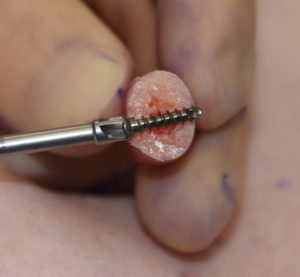
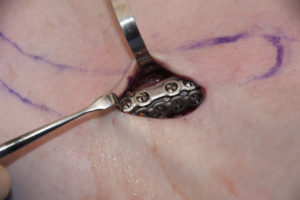
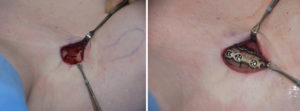
Dr. Barry Eppley
Indianapolis, Indiana

